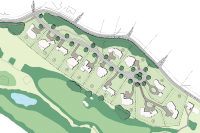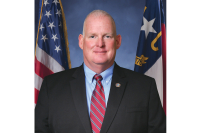The Naturalist's Corner: Cornell knows birds – and I don’t
The Great Backyard Bird Count (GBBC) is a citizen-science venture conducted under the auspices of Cornell Lab of Ornithology and Audubon. It is conducted each February. It began as a kind of “feeder watch” or backyard project with volunteers counting the birds around their homes. A few years back the GBBC expanded its scope to include almost any setting participants decided to bird, including but not limited to public lands like parks and wildlife refuges.
In retrospect, I can see that my first GBBC was a harbinger of things to come. That year, early 2000s, was one like this one with large numbers of pine siskins. My feeders and the trees in my back yard were constantly full of the little buggers. On count day I counted 43 siskins at my feeders and could see at least that many more in the treetops. I recorded a conservative estimate of 75. The red flags flew!
I was contacted by a reviewer who informed me that I must have been mistaken – 75 pine siskins was an unheard of number. I responded that I did indeed have 75 siskins, probably more, but to no avail. The record was stricken.
Well, I decided that GBBC reviewers were probably prone to err on the side of caution and that 75 siskins was a high number so I just dropped the discourse. But my ego was bruised so I didn’t participate in the next couple of GBBCs.
Then February 2005 my brother Ford and I found ourselves in Louisiana at a gathering of the clans. It was the weekend of the GBBC and we decided to do an impromptu count at Black Bayou Lake National Wildlife Refuge. While that year’s weather was bitter and the count was low, we enjoyed ourselves.
We decided to make the GBBC at Black Bayou an annual event. Surely as much a social event as scientific but an accurate count nonetheless.
Related Items
Fast-forward to February 2009 — our fourth annual Black Bayou GBBC. This February we were a bit surprised and delighted to encounter palm warblers. I knew that palm warblers over wintered in Louisiana and didn’t anticipate the need for documentation even though my camera was in the truck.
It must have been the numbers thing again because the day after I submitted my count report I received, what to me, was a very patronizing email from a reviewer announcing that I had obviously made a typo in my report and meant two not 20 palm warblers.
I replied in a similar tone informing the reviewer that I, indeed, knew the difference between two and 20 and that 20 was, in fact, a conservative estimate.
After getting no response I checked the GBBC database and found that my record of palm warblers at Black Bayou was removed. I emailed the reviewer, asking if that was the end of the story. And received another patronizing email, which included a note that I should remember that the reviewer had no way of knowing my birding experience.
The devil made me do it. In my response I mentioned that, in fact, I did not know the reviewer’s birding experience either. Finally after about the third email exchange, in which I was admonished for being terribly rude and even accused of flaming in all CAPS, which I never did, I received a records form to fill out.
I dutifully filled out the form and returned it but you guessed it — still no palm warblers on the Black Bayou count. From perusing the GBBC blog, I discovered other contributors had experienced the same “numbers” problem. One solution I saw was simply, don’t report numbers greater than one or two and there’s generally no problem.
But what about the “science” part of citizen-science, doesn’t science require that we be as accurate as possible?
And I can’t help but mention the 2,000-pound ivory-billed woodpecker in the room. Perhaps if I had been able to convene a press conference at the White House to announce the 20 palm warblers with the same fanfare Cornell used to announce the “rediscovery” of the never-again-seen ivory-billed woodpecker in 2005 my sighting would have validity.
It’s not what ya’ know — it’s who ya’ know.













